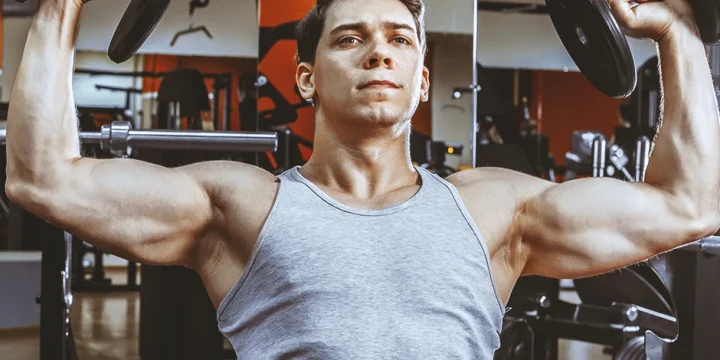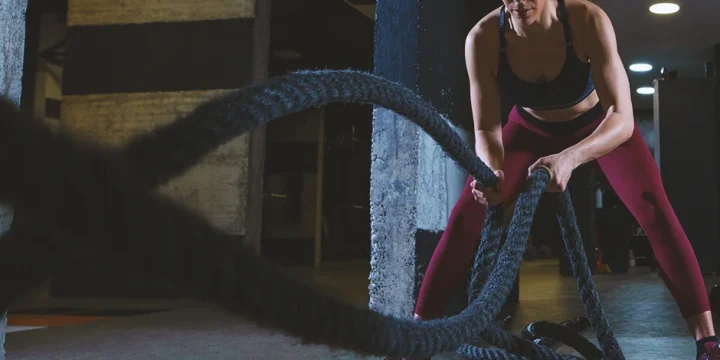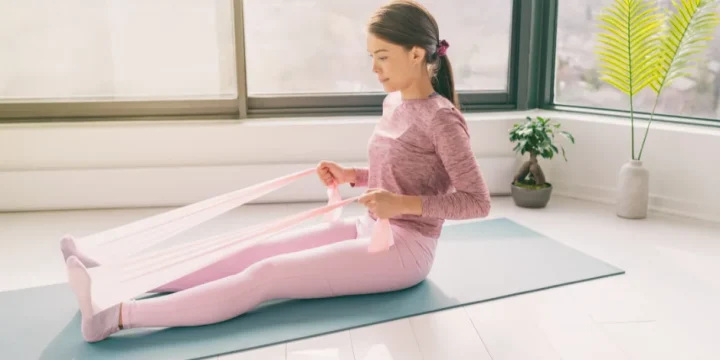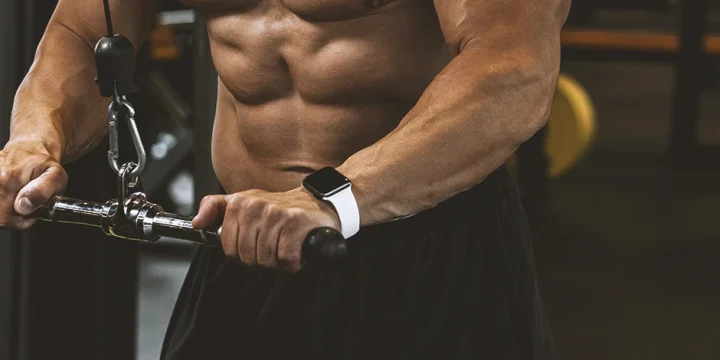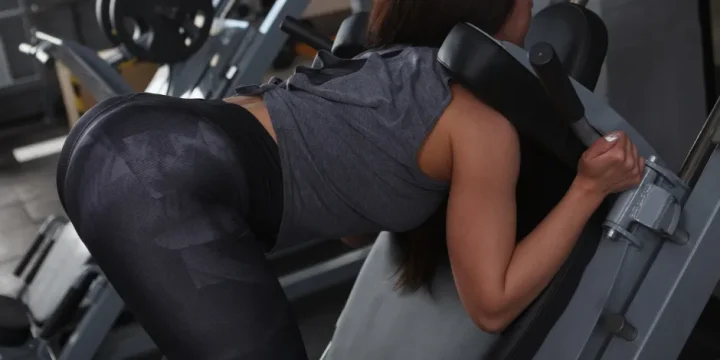Many of my female fitness clients find the back a challenging part of the body to target, so it often ends up overlooked.
However, working your back muscles can increase upper body strength, correct postural issues, and reduce the risk of injury.
I got my colleagues at Total Shape to help me compile a list of the best back exercises for women to improve their strength and tone in this important area.
Read on for details on the best back exercises to implement into your workout routine.
Quick Summary
- The most effective back workouts for women include the Upright Row, Resistance Band Pull-Apart, and Single-Arm Rear Delt Raise.
- Back workouts for women are essential for muscle strength, core support, posture correction, and reducing injury risk.
- Research from CDC suggests that 30 percent of Americans, including women, experience low back pain, and engaging in back workouts can help improve back strength, preventing future discomfort.
- In my experience, clients may feel sore a day or two post-workout, and I advise prioritizing ample rest, a healthy diet, and muscle recovery supplements.
Best Back Exercises for Women
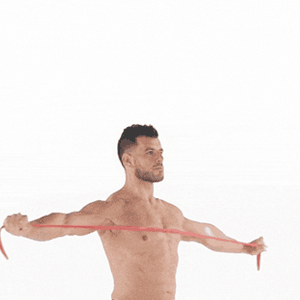
Here are some of the best exercises I incorporate into my female clients’ back workouts.
1. Resistance Band Pull-Apart
Resistance Band Pull-Apart is an exercise where a resistance band is used to pull the hands apart, engaging the upper back and shoulders for improved stability and strength.
Here's how to do it:
- Stand up straight with feet hip-width apart.
- Hold both ends of a resistance band at shoulder width, keeping your arms straight.
- Pull the resistance band apart, squeezing your shoulder blades together.
- Maintain proper posture, ensuring your arms do not pass your sides.
- Keep tension on the band throughout the entire motion and slowly return to the starting position.
As a fitness trainer, I recommend doing three sets of 10-15 reps for an effective upper back and shoulder workout.
 2. Upright Row
2. Upright Row
The Upright Row is a weightlifting exercise that targets the muscles of the shoulders and upper traps. Here's how to do it:
- Begin by standing straight, feet slightly wider than shoulder-width apart, and knees slightly bent.
- Hold a dumbbell in each hand with an overhand grip, keeping your hands at your sides and palms facing your body.
- Initiate the movement by pulling the weights towards shoulder level with a slight bend in your elbows, ensuring your elbows point outward.
- Continue pulling until the weights reach chin level, holding this position briefly before lowering the weights to the starting position while inhaling.
- Avoid locking your elbows during the downward movement.
In my experience, aiming for 8-12 reps with proper form is crucial to strengthen your shoulders, traps, and upper-back muscles based on your fitness level.
3. Single-Arm Dumbbell Row
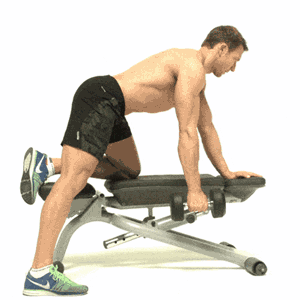
The Single-Arm Dumbbell Row is a strength-training exercise that targets the muscles of the upper back, including the latissimus dorsi.
Here's how to do it:
- Bend forward at the waist, placing your right hand and leg on a bench.
- Hold a dumbbell in your left hand, keeping your arm slightly bent at your side.
- Gradually pull the dumbbell upward from the ground until it reaches chest level.
- Engage your core to protect your spine during the lifting movement.
- Slowly lower the dumbbell back down to the starting position.
- Repeat for 8-10 reps.
- Switch to the left leg and place your left hand on the bench for support, holding the dumbbell in your right hand.
- Perform 8-10 reps on this side.
 4. Single-Arm Rear Delt Raise
4. Single-Arm Rear Delt Raise
The Single-Arm Rear Delt Raise is a shoulder exercise that specifically targets the rear deltoids, which are the muscles located at the back of the shoulders.
Here's how to do it:
- Begin with a dumbbell or kettlebell in one hand at waist level.
- Maintain a slight bend in your knees to avoid locking them.
- Tighten your core and keep your shoulders back as you hinge forward at the waist, forming a 45-degree angle with your torso.
- From this position, gradually lift the weight toward shoulder height while externally rotating your shoulder.
- Squeeze your shoulder blades together as you come up.
- Keep your elbow slightly bent throughout the motion.
- Reverse the motion and return to the starting position.
- Repeat the exercise on the other side.
5. Superman

The Superman exercise is a bodyweight exercise that targets the muscles of the lower back, glutes, and hamstrings.
Here's how to do it:
- Begin by lying on your stomach with your forehead resting lightly on the floor.
- Extend your arms in front of you, and keep your legs in a straight line behind you.
- Palms should be facing down, and maintain a tight core with a flat back.
- Simultaneously lift your arms, chest, and legs off the floor until you feel engagement in your lower back muscles.
- Hold the lifted position for a few seconds at the top of the movement.
- Slowly lower back down to the starting position.
- Repeat the exercise for 2-3 sets of 8-12 repetitions.
From my perspective, this exercise can effectively work your glutes, hamstrings, lower back, and ab muscles.
“Our back supports us, allowing us to stand, bend over, and basically perform all necessary human action and we shouldn’t be taking the ability to do those types of basic movements for granted.”
- Eric Botsford, Certified Personal Trainer
 6. Plank Up Down
6. Plank Up Down
The Plank Up-Down is a core exercise that also engages the muscles of the shoulders, arms, and chest. Here's how to do it:
- Start in a high-plank position with your palms on the floor, arms straight, and feet shoulder-width apart.
- Lower your right elbow to the floor, followed by your left elbow, transitioning into a forearm plank position.
- With both elbows bent, place the palm of your right hand on the floor and straighten your right arm.
- Repeat the same movement on the left side, placing the palm of your left hand on the floor and straightening your left arm.
- This completes one rep, returning you to the high-plank position.
As a fitness trainer, completing 2-3 sets of 8–12 reps while keeping a tight core and glutes effectively works the shoulders, glutes, arms, and core.
Why Women Need to Exercise Their Backs
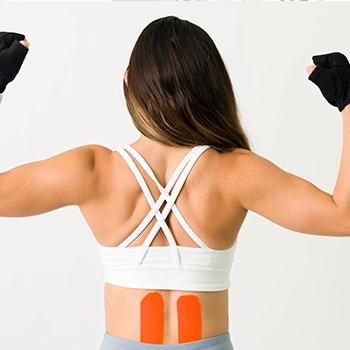
Exercising the back muscles is crucial for women as it helps maintain good posture by strengthening the core.
As per the Mayo Clinic, participating in a back workout addresses concerns like improving muscular tension, relieving joint pain, and enhancing overall balance and stability [1].
Considering that around 30% of individuals in the United States suffer from chronic lower back pain, incorporating regular back exercises is a proactive approach to improve long-term health and well-being, according to the Centers for Disease Control and Prevention [2].
Related Articles:
FAQs
How Often Should Women Train Their Back?
Women should train their backs up to three non-consecutive days per week. Like any other workout, the muscles need time to rest and recover before being worked on again.
How Do Women Get Rid of Belly and Back Fat?
Women can get rid of belly and back fat by eating healthy and implementing a consistent fitness routine that includes aerobic exercise and strength training that targets the abdominal and back muscles.
References:
- https://www.mayoclinic.org/healthy-lifestyle/fitness/in-depth/core-exercises/art-20044751
- https://www.cdc.gov/nchs/products/databriefs/db415.htm
About The Author
You May Also Like

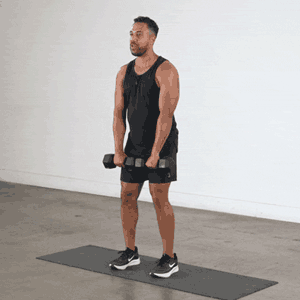 2. Upright Row
2. Upright Row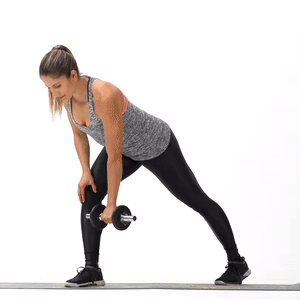 4. Single-Arm Rear Delt Raise
4. Single-Arm Rear Delt Raise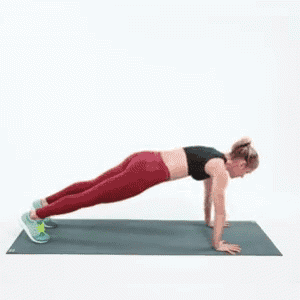 6. Plank Up Down
6. Plank Up Down